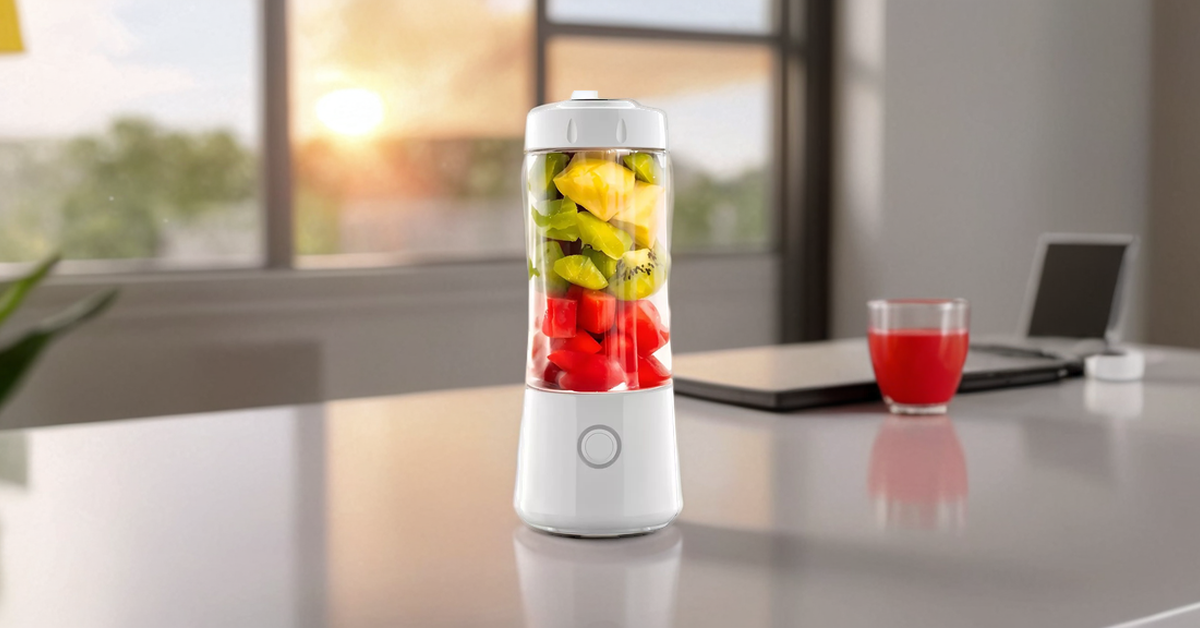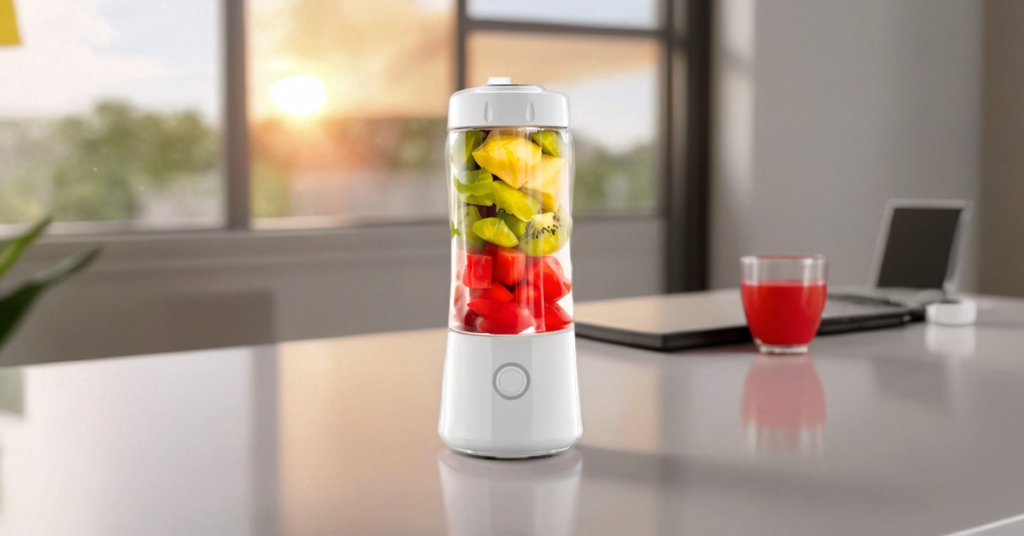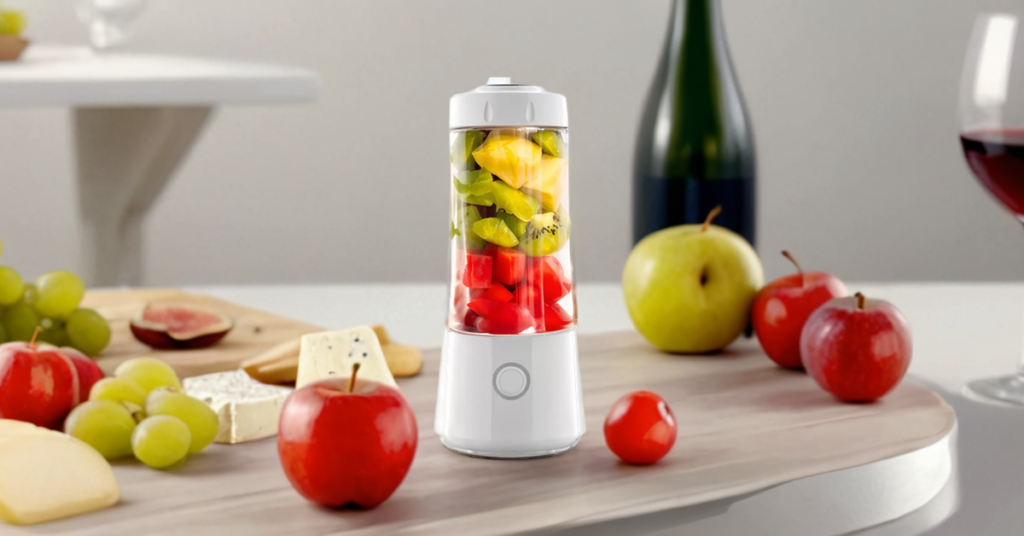Search

Mini blenders have revolutionized the way we prepare quick, nutritious drinks and snacks on the go. These compact powerhouses pack impressive functionality into small packages, making them perfect for small kitchens, dorm rooms, and busy lifestyles. A good mini blender combines portability with enough power to create smooth blends, typically ranging from 600 to 900 watts, which is sufficient for most everyday blending needs.

The popularity of these personal blenders continues to grow as more people prioritize healthy eating without sacrificing convenience. Models like the Beast Mini feature innovative designs where the blending vessel doubles as a drinking cup, while others like the Nutribullet Pro 900 offer powerful motors in space-saving designs. Then you have the go anywhere and blend anywhere mini blenders and portable juicers that allow you to create your healthy juices in the car park of the gym, on your desk in the office, or even on your morning commute at a fraction of the price of their counter top companions. Whether you’re whipping up morning smoothies, protein shakes, or quick sauces, these compact appliances deliver impressive results without the countertop commitment of their larger counterparts.
The history of mini blenders begins with the invention of the first blender by Stephen Poplawski in 1919. He initially designed it as a drink mixer for making malts and milkshakes in drug stores. His invention was later patented in 1922 and featured spinning blades at the bottom of a container.
While standard blenders became common in commercial settings, the mini blender concept emerged decades later as manufacturers recognized the need for more compact appliances for personal use.
The 1990s saw the first real push toward miniaturization in the blender market. These early compact models maintained basic blending functions but in smaller form factors that consumed less counter space.
The real breakthrough came in the early 2000s with the introduction of personal single-serve blenders. These innovative appliances featured portable containers that doubled as drinking cups, making them perfect for busy lifestyles.
Today’s mini blenders come in various styles and power options. We’ve seen significant improvements in battery technology, allowing for cordless operation and enhanced portability.
Modern mini blenders now offer impressive functionality despite their small size. Many models include multiple speed settings, pulse functions, and specialized blades for different ingredients.
The market has expanded to include ultra-compact travel blenders, USB-rechargeable models, and smart mini blenders with pre-programmed settings for different recipes. This evolution shows how mini blenders have transformed from simple devices to versatile kitchen tools that cater to our on-the-go lifestyles.
Mini blenders come in several distinct varieties, each designed for specific blending needs and lifestyles. They range from powerful personal options to portable battery-operated models.
Single-serve personal blenders are compact powerhouses designed specifically for individual portions. These models typically feature a motor base with detachable cups that double as drinking containers.
The convenience factor is significant here. Many models include flip-top lids that transform your blending cup into a travel mug. This makes them perfect for busy mornings.
We’ve found that the best personal blenders can handle tough ingredients like frozen berries and kale with ease. Some even come with multiple cup sizes for different portion needs.

Immersion blenders, also called stick or hand blenders, offer incredible versatility in a compact form. Unlike traditional blenders, you bring these to your ingredients rather than the other way around.
They consist of a motorized handle with a blending wand that can be immersed directly into containers. This design makes them perfect for blending hot soups, sauces, and baby food.
Many high-quality immersion blenders feature detachable shafts for easy cleaning. Some models include additional attachments like whisks and food choppers.
The power range typically spans from 200-500 watts. While less powerful than countertop models, they’re sufficient for most blending tasks.
Storage is a major advantage here. These slim devices fit easily in kitchen drawers, making them ideal for small spaces.
Battery-operated mini blenders represent the ultimate in portability. These compact devices can blend anywhere without needing a power outlet.
Most run on rechargeable lithium-ion batteries and can complete several blending cycles on a single charge. USB charging capability is common, allowing for easy power-ups from laptops or power banks.
The portable design makes these blenders perfect for travel, office use, or outdoor activities. Some models even come with travel cases for added protection.
While generally less powerful than plug-in options (typically 100-300 watts), they can still handle softer fruits, protein powders, and pre-chopped ingredients effectively.
Many feature built-in cups with secure lids, creating an all-in-one solution for blending and drinking on the go. Premium models like portable Vitamix options maintain impressive blending power despite their small size.

Mini blenders offer a range of advantages that make them essential kitchen tools for busy individuals. They combine convenience with functionality in a compact package that fits seamlessly into modern lifestyles.
Mini blenders are designed with simplicity in mind. Most models feature one-touch operation with just a button or two, making them incredibly user-friendly even for beginners. We’ve found that their straightforward controls eliminate the learning curve associated with larger, more complicated appliances.
The compact size means fewer parts to disassemble when cleaning time comes around. Many mini blenders come with dishwasher safe components, allowing for effortless cleanup. Simply rinse, place in the dishwasher, and you’re done!
Some models even include self-cleaning features:
This quick cleaning process encourages more frequent use, helping you maintain healthier eating habits without the hassle of extensive cleanup.
The compact design of mini blenders makes them perfect travel companions. Many models are cordless and rechargeable, allowing you to blend anywhere without searching for an outlet.
Most mini blenders double as a travel cup, so you can blend and drink from the same container. This eliminates the need to transfer your smoothie to another vessel, reducing dishes and potential spills.
We’ve seen these convenient appliances used in various settings:
Their lightweight construction doesn’t weigh down your bag, and their durable materials withstand the rigors of travel. Some models even come with special carrying cases or protective covers to prevent damage while on the move.
Mini blenders may be small, but they pack powerful motors capable of creating perfectly blended creamy, fully incorporated smoothies. The blade design in quality mini blenders efficiently breaks down fruits, vegetables, and seeds to release vitamins and nutrients.
The single-serving size encourages proper portioning and eliminates the need for extensive measuring. Just toss ingredients in until the container is appropriately filled.
We’ve noticed that mini blenders excel at making:
The powerful motors can process ingredients in under a minute, delivering nutrient-rich beverages faster than their full-sized counterparts. This efficiency makes it easy to incorporate healthy options into even the busiest schedules.

When shopping for mini blenders, several critical features determine whether you’ll end up with a reliable kitchen companion or a disappointing purchase. The right combination of power, blade quality, and overall durability will ensure your blender delivers consistent results for years to come.
The motor is the heart of any mini blender, and power ratings typically range from 600 to 900 watts in quality models. We’ve found that anything below 500 watts often struggles with frozen fruits and ice.
The NutriBullet Pro 900 stands out with its powerful 900-watt motor that consistently produces smooth results. This power level handles tough ingredients like nuts and frozen berries with ease.
Look for models with multiple speed settings or a pulse function. These features give you better control over the texture of your blends. The Vitamix mini models, while more expensive, offer precise power control that’s hard to match.
Heat management is also crucial. Better mini blenders include cooling systems that prevent overheating during extended use, which protects the motor’s lifespan.
Blade design and material dramatically impact blending performance and longevity. High-quality stainless steel blades resist corrosion and maintain sharpness longer than cheaper alternatives.
We recommend looking for blades with multiple prongs and cutting edges. The best designs include:
NutriBullet’s extractor blades are specially designed to break down seeds, stems, and skins to release nutrients. Vitamix uses aircraft-grade stainless steel for exceptional durability.
The blade assembly should connect securely to the motor base. Loose connections waste power and create excessive noise. Many premium mini blenders feature cross-blade designs that create a vortex effect for thorough blending.
Mini blenders face daily stress from crushing ice, blending frozen fruits, and processing tough ingredients. Construction quality directly affects how long your investment will last.
The cup material matters significantly. Look for BPA-free Tritan plastic or glass containers that won’t absorb odors or stains. Quality models have reinforced bases where the cup connects to the blade assembly.
We suggest checking user reviews for longevity reports before purchasing. The motor housing should feel solid, not flimsy, with rubber feet to prevent movement during operation. Quality models use metal gears instead of plastic for the connection between the motor and blades.
Mini blenders offer versatility in a compact package. These handy kitchen tools tackle numerous daily food prep tasks with surprising efficiency despite their small size.
Mini blenders are perfect for creating personal-sized smoothies and protein shakes. Their compact blending vessels are typically designed as tumbler-sized containers you can drink from directly, eliminating extra dishes and saving time during busy mornings.
Many mini blenders come with recipe books to inspire your smoothie creations. You can experiment with different combinations of fruits, vegetables, yogurt, and supplements to create personalized drinks that match your taste preferences and nutritional needs.
Mini blenders excel at creating small batches of sauces and dips without the hassle of cleaning a full-sized appliance. We can quickly blend together ingredients for homemade salsa, guacamole, pesto, or salad dressings in just seconds.
The compact design makes these blenders particularly useful for chopping onions and mincing garlic – common ingredients in many sauces and dips. This saves valuable prep time and keeps your hands free from lingering odors.
For entertaining, mini blenders allow us to prepare several different dips in quick succession. Simply rinse between uses or utilize multiple blending cups if your model includes them. This versatility makes them valuable tools for home cooks who enjoy hosting gatherings.
When it comes to processing soft vegetables, mini blenders provide just enough power without overwhelming the ingredients. We can quickly turn tomatoes into pasta sauce, avocados into creamy spreads, or cucumbers and yogurt into tzatziki.
Mini blenders are particularly effective for creating baby food from steamed vegetables. The small batch size is perfect for making fresh, preservative-free meals for little ones without wasting food or storage space.
Many top-rated mini blenders include pulse functions that give us precise control over the texture. This feature is especially helpful when we want to maintain some chunkiness in vegetable-based sauces or create perfectly textured vegetable purees.
For quick meal prep, we can use mini blenders to create vegetable bases for soups, curries, and other dishes that require finely chopped or pureed vegetables as a foundation.

Proper care extends the life of your mini blender and ensures it continues making perfect smoothies and shakes. Regular maintenance prevents buildup, keeps blades sharp, and helps avoid common performance issues.
Mini blenders need cleaning after each use to prevent residue buildup. For quick cleaning, fill the blender cup halfway with warm water, add a drop of dish soap, and run it for 10-15 seconds. This method works well for light cleaning between uses.
For thorough cleaning, disassemble the parts according to your manufacturer’s instructions. Many modern mini blenders have dishwasher safe components, but always check your model’s manual first.
Never immerse the blender base in water. Instead, wipe it with a damp cloth to remove spills and splatters. For cordless models, remove the battery before cleaning the base.
Clean the rubber gasket separately to prevent odors and mold growth. Let all parts dry completely before reassembling.
Blender blades work hard and need special attention. We recommend inspecting blades regularly for food particles that may get trapped underneath. Use a small brush to clean hard-to-reach areas around the blades.
Most mini blenders use stainless steel blades that resist corrosion but can dull over time. While you can’t easily sharpen these blades at home, these practices help maintain sharpness:
If your blades become too dull, contact the manufacturer about replacement options rather than attempting to sharpen them yourself.
When your mini blender stops working properly, try these simple fixes. If the blender won’t turn on, check that it’s properly plugged in or that the battery is charged for cordless models. Ensure all components are correctly assembled, as many blenders have safety features preventing operation when parts are misaligned.
For weak performance or stalling, don’t use abrasive cleaners that might damage the motor. Instead, check for jammed blades or overfilling. Mini blenders work best when filled to their recommended capacity.
Leaking usually indicates improper assembly or worn gaskets. Check that seals are clean, undamaged and properly seated before blending. Replace worn gaskets rather than continuing to use them.
For strange noises, immediately stop the blender and check for foreign objects or if ingredients are too frozen. Adding more liquid often helps the blending process.
Leave a comment